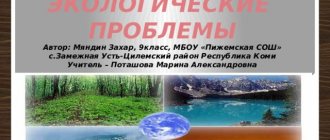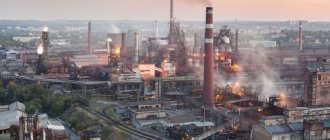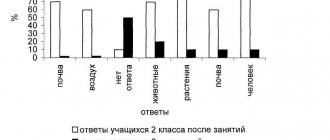Presentation “Atmospheric Pollution”
- Atmospheric air, one of the most important life-supporting natural components on Earth, is a mixture of gases and atmospheric aerosols that has developed during evolution. Atmospheric pollution is the most powerful, constantly acting factor affecting plants, animals, and microorganisms; on the quality of human life. Atmospheric air, one of the most important life-supporting natural components on Earth, is a mixture of gases and atmospheric aerosols that has developed during evolution. Atmospheric pollution is the most powerful, constantly acting factor affecting plants, animals, and microorganisms; on the quality of human life.
- Pollution methods
- Transport pollution The environmental impact of motor transport on human health depends on the amount of substances emitted, the level of excess of maximum permissible concentrations, and the length of time a person stays near highways. Analysis of air samples shows that air quality is deteriorating. The percentage of exceeding the maximum permissible concentrations of pollutants on and near highways in recent years is 11-16%. Cars in Russia today are the main cause of air pollution in cities. Now there are more than half a billion of them in the world. Emissions from cars in cities are especially dangerous because they pollute the air mainly at a level of 60-90 cm from the Earth's surface and especially on sections of highways where there are traffic lights.
- Radioactive contamination of the atmosphere There are natural sources of radioactivity everywhere in the biosphere, and humans have always been exposed to natural radiation. External exposure occurs due to radiation of cosmic origin and radioactive substances in the environment. The greatest danger is posed by radioactive contamination of the biosphere as a result of human activity. In the second half of this century, nuclear power plants began to be put into operation. During normal operation of nuclear energy and industrial facilities, environmental pollution constitutes a negligible proportion. A different situation arises during accidents at nuclear facilities. Thus, during the explosion at the Chernobyl nuclear power plant, only about 5% of nuclear fuel was released into the environment. But this led to exposure of many people, and large areas were contaminated to such an extent that they became hazardous to health. This required the relocation of thousands of residents from contaminated areas. An increase in radiation as a result of radioactive fallout was noted hundreds and thousands of kilometers from the accident site. Currently, the problem of warehousing and storing radioactive waste from the military industry and nuclear power plants is becoming increasingly acute. Every year they pose an increasing danger to the environment. Thus, the use of nuclear energy has posed new serious problems for humanity.
- Chemical pollution The main chemical pollutant of the atmosphere is sulfur dioxide, which is released during the combustion of coal, oil, and during the smelting of iron and copper. Sulfur dioxide causes acid rain. With a high concentration of sulfur dioxide, dust, smoke in humid, quiet weather in industrial areas, white or damp smog occurs - a toxic fog that sharply worsens people's living conditions.
- Household pollution Serious negative consequences for humans and other living organisms are caused by air pollution from substances that are used in refrigeration units, in the production of semiconductors and aerosol cans.
- Ozone depletion
Currently, the depletion of the ozone layer is recognized by all as a serious threat to global environmental security. Declining ozone concentrations weaken the atmosphere's ability to protect all life on Earth from harsh ultraviolet radiation. It is no coincidence that in areas with low ozone levels there are numerous sunburns, an increase in the incidence of people with skin cancer, etc. It has also been established that plants under the influence of strong ultraviolet radiation gradually lose their ability to photosynthesize, and the disruption of plankton life leads to the breaking of the chains of aquatic ecosystems, etc.
- The impact of pollution on health All air pollutants, to a greater or lesser extent, have a negative impact on human health. These substances enter the human body primarily through the respiratory system. The respiratory organs are directly affected by pollution, since about 50% of impurity particles penetrating into the lungs are deposited in them.
- To reduce natural and anthropogenic air pollution, it is necessary:
purify atmospheric emissions from solid and gaseous pollutants using electric precipitators, liquid and solid absorbers, cyclones, etc.;
use environmentally friendly types of energy;
apply low-waste and non-waste technologies;
to achieve a reduction in the toxicity of automobile exhaust gases by improving the design of engines, as well as improving existing and creating new electric vehicles and engines running on hydrogen fuel.
Extracurricular event on ecology for grades 5-7 with a presentation. Air pollution
Conversation on ecology, grades 5-7.
Air pollution. Relevance of the topic: Planet Earth is our common home, every person living in it must treat it with care and respect, preserving all its values and wealth. Description of the material : This year I was faced with the task of telling the children about the ecology of our region. I bring to your attention the third conversation on ecology “Atmospheric Pollution”, designed for children in grades 5-7; this material can also be useful for teachers, educators and parents. The text of the conversation contains hyperlinks. Recommendations: The conversation is accompanied by a presentation (multimedia support), which allows you to more fully understand the degree of danger from the pollution of our Home-Earth and the pollution of water bodies. Goal: To develop in children knowledge about the types of air pollution. To arouse the desire of schoolchildren to protect nature, to give instructions for carrying out some activities to protect nature. Objectives: -to study the scale of the problem;
-analyze types of air pollution; -find rational ways to protect the atmosphere from pollution. Progress of the conversation.
In the last lesson, we talked about the second most important, but not the most important, environmental problem.
-What is this problem? - How is it dangerous for humanity? -What do you know about her? -What do your parents and friends know about her? — What can we do to protect our village? Children's answers, reasoning.
To understand what we will talk about today, guess the riddle.
Show presentation
That's right, try to formulate the topic of our lesson today.
(children's answers) 3 slide.
Air is one of the key concepts of our existence.
In the language of physicists and chemists, air is a mixture of several gases, and in the language of poets, air is life, freshness, freedom. Exercise Let's all try to hold our breath together and see how long we can tolerate the absence of air in our lungs. Discussion of the result. 4slide.
-What is air needed for?
-How do plants breathe? -How do you know that you are breathing? -Through which organ do people breathe? -Who else breathes through their nose? -And what is air? -Can anyone see the air now? -Or maybe he’s not there at all? -Tell me, why don’t we see air? -In what case do we see him? Children's answers and reasoning. 5 slide.
Atmospheric pollution is the introduction of new uncharacteristic physical, chemical and biological substances into the atmospheric air or a change in the natural average long-term concentration of these substances in it.
6 slide.
There are two types of pollution: natural and artificial.
• Natural air pollution is caused by natural processes (volcanic eruptions, forest fires, dust storms, weathering processes, decomposition of organic substances) • Artificial air pollution occurs as a result of practical human activities (industrial and heat power companies, transport, home heating systems, agriculture, household waste) 7 slide.
Natural sources of air pollution include such severe natural phenomena as volcanic eruptions and dust storms.
As a rule, they are catastrophic in nature. When volcanoes erupt, a large number of gases, water vapor, solid particles, ash and dust are released into the atmosphere. After the subsidence of volcanic activity, the overall balance of gases in the atmosphere is gradually restored. In particular, as a result of the eruption of the Krakatoa volcano in 1883, about 150 billion tons of dust and ash were released into the atmosphere. Fine dust particles remained in the upper atmosphere for several years. “A black cloud about 27 km high rose above Krakatoa. The explosions continued all night and were heard at a distance of 160 km from the volcano. Gases, vapors, debris, sand and dust rose to a height of 70 - 80 km and dispersed over an area of over 827,000 km" 8 slide.
Large forest fires significantly pollute the atmosphere.
More often than not, they end up emerging in dry years. In Russia, the most dangerous forest fires are in Siberia, the Far East, the Urals, and the Komi Republic. On average, the area covered by fires per year is about 700 thousand hectares. In dry years, say, in 1915, it reached 1 - 1.5 million hectares. Smoke from forest fires spreads over large areas - about 6 million km. The summer of 1972 remains memorable for the residents of our village, when the air was blue from the smoke of fires, visibility on the tracks did not exceed 20 - 30 m. The forest and peat bogs were burning. Direct damage from forest fires averages 200 - 250 million dollars. On average, up to 20-25 million m3 of wood is burned and damaged per year. Slide 9
Dust storms occur due to the transfer of tiny soil particles raised from the earth's surface by powerful winds.
Powerful winds - tornadoes and hurricanes - also lift large rock fragments into the air, although they do not stay in the air for long. During powerful storms, up to 50 million tons of dust rise into the atmospheric air. The causes of dust storms are drought, hot winds; They are provoked by intensive plowing, grazing, and clearing of forests and shrubs. Dust storms are most common in steppe, semi-desert and desert areas. In Russia, catastrophic dust storms were observed in 1928, 1960, 1969, etc. On the map you can see the places with the most frequent droughts marked in yellow. Shaded - dust storms. 10 slide.
Weathering of rocks and deterioration of the quality of bearing soils leads to the formation of dust in the air.
The decomposition of living organisms pollutes the air with toxic substances. 11 slide.
Artificial sources of pollution are the most dangerous for the atmosphere.
According to their state of aggregation, all pollutants of anthropogenic origin are divided into solid liquid and gaseous, with the latter accounting for about 90%. The problem of air pollution is not new. For more than two centuries, serious concerns have been caused by air pollution in large industrial centers of most European countries. However, for a long time these pollutions were local in nature. Rapid growth of industry and transport in the 20th century. led to the fact that such a volume of substances released into the air can no longer dissipate. Their concentration increases, which entails dangerous consequences for the biosphere. 12 slide.
The chemical industry occupies a special position among sources of air pollution.
It supplies sulfur dioxide (SO2), hydrogen sulfide (H2S), nitrogen oxides (NO, NO2), hydrocarbons (CxHy), halogens (F2, Cl2), etc. The chemical industry is characterized by a high concentration of enterprises, which creates increased environmental pollution. Substances released into the atmosphere can enter into chemical reactions with each other, forming highly toxic compounds. 13 slide.
Smog.
14 slide.
Of all the artificial sources of air pollution, the most dangerous is road transport.
In 1900, there were 11 thousand cars in the world, in 1950 - 48 million, in 1970 - 181 million, in 1982 - 330 million, currently - about 500 million cars. They burn hundreds of millions of tons of non-renewable reserves of petroleum products. Car exhaust gases contain about 280 harmful components. Road transport is becoming one of the main sources of environmental pollution. In a number of foreign countries (France, USA, Germany), road transport ultimately accounts for more than 50-60% of atmospheric pollution. 15 slide.
The widespread use of freons in refrigeration units and in the production of aerosol cans is associated with their appearance at high altitudes, in the stratosphere and mesosphere.
Currently, the depletion of the ozone layer is recognized by all as a serious threat to global environmental security. Declining ozone concentrations weaken the atmosphere's ability to protect all life on Earth from harsh ultraviolet radiation (UV radiation). Living organisms are very vulnerable to ultraviolet radiation, because the energy of even one photon from these rays is enough to destroy the chemical bonds in most organic molecules. It is no coincidence that in areas with low ozone levels there are numerous sunburns, there is an increase in the incidence of skin cancer, etc. For example, according to a number of environmental scientists, by 2030 in Russia, if the current rate of depletion of the ozone layer continues, additional cases of skin cancer will occur 6 million people. In addition to skin diseases, the development of eye diseases (cataracts, etc.), suppression of the immune system, etc. has also been established. It has also been established that plants under the influence of strong ultraviolet radiation gradually lose their ability to photosynthesize, and disruption of the life activity of plankton leads to a break in the trophic chains of aquatic biota ecosystems, etc. 16 slide.
Radioactive substances are particularly dangerous for people, animals and plants.
Sources of radioactive contamination of technogenic origin. These are experimental explosions of atomic, hydrogen and neutron bombs, all kinds of production related to the manufacture of thermonuclear weapons, nuclear reactors and power plants; enterprises where radioactive substances are used; radioactive waste decontamination stations; waste storage facilities from nuclear enterprises and installations; accidents or leaks at enterprises where nuclear fuel is produced and used. 17 slide.
Tests of nuclear weapons, accidents and leaks at enterprises where nuclear fuel is used pose a huge danger to people, plants and animals -Where did such a disaster occur in our country?
-What do you know about this? Children's answers.
The greatest pollution of the atmosphere occurs during explosions of thermonuclear devices.
The isotopes formed during this process become a source of radioactive decay over a long period of time. Radioactive radiation is dangerous for humans, causing radiation sickness with damage to the genetic apparatus of cells. This leads to the development of malignant tumors and hereditary diseases in people. 18 slide.
Human activities lead to increased concentrations of greenhouse gases in the atmosphere.
An increase in the concentration of greenhouse gases will lead to heating of the lower layers of the atmosphere and the surface of the earth. Any change in the Earth's ability to reflect and absorb heat, including those caused by increases in atmospheric greenhouse gases and aerosols, will change the temperature of the atmosphere and the world's oceans and disrupt stable patterns of circulation and weather. Greenhouse effect 19 slide.
This is one of the most pressing problems today.
The ice is melting, the water level in the world's oceans is rising, air humidity is rising, the land area is slowly but decreasing 20 slide.
Rising average temperatures in the polar regions could cause the ice of Antarctica and Greenland to rapidly melt, causing sea levels to rise sharply, flooding coastal cities and low-lying areas, leading to economic and social disruption.
21 slides.
The air we breathe contains many harmful substances.
They cause allergies and respiratory system diseases. Consequences: headache, dizziness, nausea, allergies, asthma, skin irritation, etc.. Slide 22.
How to protect the air?
Atmospheric protection technology 1) local means - high factory chimneys that emit smoke above stagnant air. 2)electric filters for dust removal and installations for removing sulfur from smoke. 3) regulation of vehicle emissions. 4) landscaping. 5) use environmentally friendly types of energy: wind. Solar, geothermal. 23 slide. Scientists have already developed a solar-powered car, but unfortunately they have not yet come into use. 24 slide.
Ficus Benjamina and Dieffenbachia are real biofilters when it comes to toxins released, for example, by varnishes (xylene and toluene).
25 slide.
Geranium disinfects and deodorizes the air, helps with headaches
26 slide.
Asparagus absorbs heavy metal particles
Final discussion At the end of the lesson, you can give a test. Definition of atmospheric pollution. 1. An excess of: 1) Oxygen 2) Carbon dioxide is harmful to the atmosphere 2. An excess of carbon dioxide leads to: 1) Climate warming 2) Deterioration of human and animal health 3) All answers are correct 4) There are no correct answers 3. The ozone shield is : 1) Part of the atmosphere 2) Part of the biosphere 3) Part of the hydrosphere 4. Freons are contained in: 1) Deodorants 2) Wood 3) Glass 5. Why are environmentalists afraid of an increase in freons in the atmosphere?
6. The atmosphere is most polluted by: 1) Tram 2) Electric train 3) Car 4. Smog is: 1) A useful part of the atmosphere 2) A mixture of oxygen and water 3) A mixture of soot particles and water droplets 7. Name the main environmental problems of our area. Presentation on the topic: Air pollution
We recommend watching:
Environmental project, 6th grade Extra-curricular event on ecology for grades 7-9 Environmental conversation for students in grades 5-7 with presentation Extra-curricular event on ecology, grades 7-9
Similar articles:
Extracurricular event “The forest is our wealth”, grades 6-7
Ecological travel game for schoolchildren in grades 7-8
Theatrical performance on ecology for schoolchildren, grades 7-9
Ecological fairy tale for 7th grade. Scenario
Game program on ecology for teenagers






